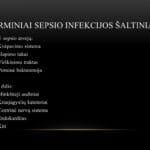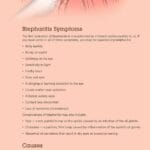Understanding the Spread of Periodontal Disease
The question of whether gum disease is contagious is a common one. While the disease itself isn’t directly contagious like a cold, the bacteria that cause it can be spread, primarily through saliva. This article will delve into the nuances of periodontal disease transmission, exploring the risks, prevention strategies, and clarifying common misconceptions.
How Periodontal Disease Spreads
Saliva: The Bacterial Highway
The primary mode of transmission for periodontal bacteria is saliva. Activities like sharing utensils, kissing, and especially using someone else’s toothbrush can facilitate the transfer of these bacteria. Is periodontal disease communicable explains this process in more detail. A single exposure, however, is unlikely to cause full-blown gum disease. It’s more about repeated and prolonged exposure, coupled with other risk factors, that significantly increases the risk.
Not Quite Like Catching a Cold
It’s crucial to understand that periodontal disease isn’t contagious in the same way as the flu or a cold. You won’t catch it simply by being near someone who has it. Instead, it’s the transfer of bacteria that may contribute to developing the disease. Your individual oral hygiene, genetics, and overall health play a significant role in determining whether exposure leads to infection.
Risk Factors Beyond Bacteria
While bacterial transmission is a factor, it’s not the sole determinant. Several other risk factors influence your susceptibility to gum disease.
- Genetics: Some individuals are genetically predisposed to gum problems.
- Smoking: Significantly weakens gum defenses, making them vulnerable.
- Diabetes: Increases the risk of gum disease and other infections.
- Other Medical Conditions: Certain illnesses and medications can impact oral health.
- Hormonal Changes: Can make gums more sensitive and susceptible to inflammation.
- Stress: May suppress the immune system, impacting the body’s ability to fight infection.
Recognizing the Red Flags: Symptoms of Gum Disease
Early detection is key in managing gum disease. Be vigilant for these potential warning signs:
- Red, Swollen, or Tender Gums: These are early indicators of inflammation.
- Bleeding Gums: While brushing or flossing, bleeding suggests gum irritation.
- Persistent Bad Breath (Halitosis): Often indicates an overgrowth of bacteria in the mouth.
- Receding Gums: The gums pull away from the teeth, exposing more of the tooth surface.
- Loose Teeth: A serious sign of advanced gum disease and potential bone loss.
- Changes in Bite: How your teeth fit together can change as gum disease progresses.
- Pus Between Teeth and Gums: A sign of infection.
If you experience any of these symptoms, schedule a dental appointment promptly.
Protecting Your Smile: Prevention Strategies
The Power of Prevention
Maintaining optimal oral hygiene is your best defense against gum disease. Think of it as building a fortress against bacterial invaders.
- Brushing: Brush twice daily for two minutes with fluoride toothpaste.
- Flossing: Floss daily to remove plaque and debris from between teeth.
- Mouthwash: Use an antimicrobial mouthwash to further reduce bacteria.
- Regular Dental Visits: Professional cleanings and checkups are crucial for early detection and intervention. Consider an incinolet toilet for added hygiene in your home.
Don’t Share Personal Items
Avoid sharing toothbrushes, utensils, and other items that can transmit saliva. This is especially important for children and individuals with compromised immune systems.
Treatment and Management: Taking Charge of Your Gum Health
Managing Periodontal Disease
While periodontitis can’t be completely cured, it can be effectively managed. Your dentist can recommend appropriate treatments depending on the severity of your condition.
- Scaling and Root Planing: A deep cleaning procedure that removes plaque and tartar from below the gum line.
- Antibiotics: May be prescribed to control infection.
- Surgery: Necessary in severe cases to repair damaged tissues and bone.
Early diagnosis and intervention are essential for preventing further damage and preserving your oral health.
Gingivitis vs. Periodontitis: Understanding the Difference
Early Intervention is Key
It’s important to distinguish between gingivitis and periodontitis. Gingivitis is the milder, early stage of gum disease, often reversible with improved oral hygiene and professional cleaning. Periodontitis, however, is a more serious infection that can lead to bone loss and eventually tooth loss.
Oral Health and Overall Wellness
The Big Picture
Oral health is intrinsically linked to overall health. Research suggests connections between periodontal disease and other systemic conditions like heart disease and diabetes. Taking care of your gums and teeth contributes to your overall well-being.
Ongoing Research and Evolving Understanding
The Future of Gum Disease Treatment
Research in periodontal disease is ongoing, and our understanding is constantly evolving. Scientists are exploring the complex interplay of factors that contribute to its development. Stay informed and consult your dentist for personalized advice and the most up-to-date information.
- China II Review: Delicious Food & Speedy Service - April 17, 2025
- Understand Virginia’s Flag: History & Debate - April 17, 2025
- Explore Long Island’s Map: Unique Regions & Insights - April 17, 2025

















1 thought on “Can You Catch Gum Disease? Understanding Periodontal Disease Contagion”
Comments are closed.